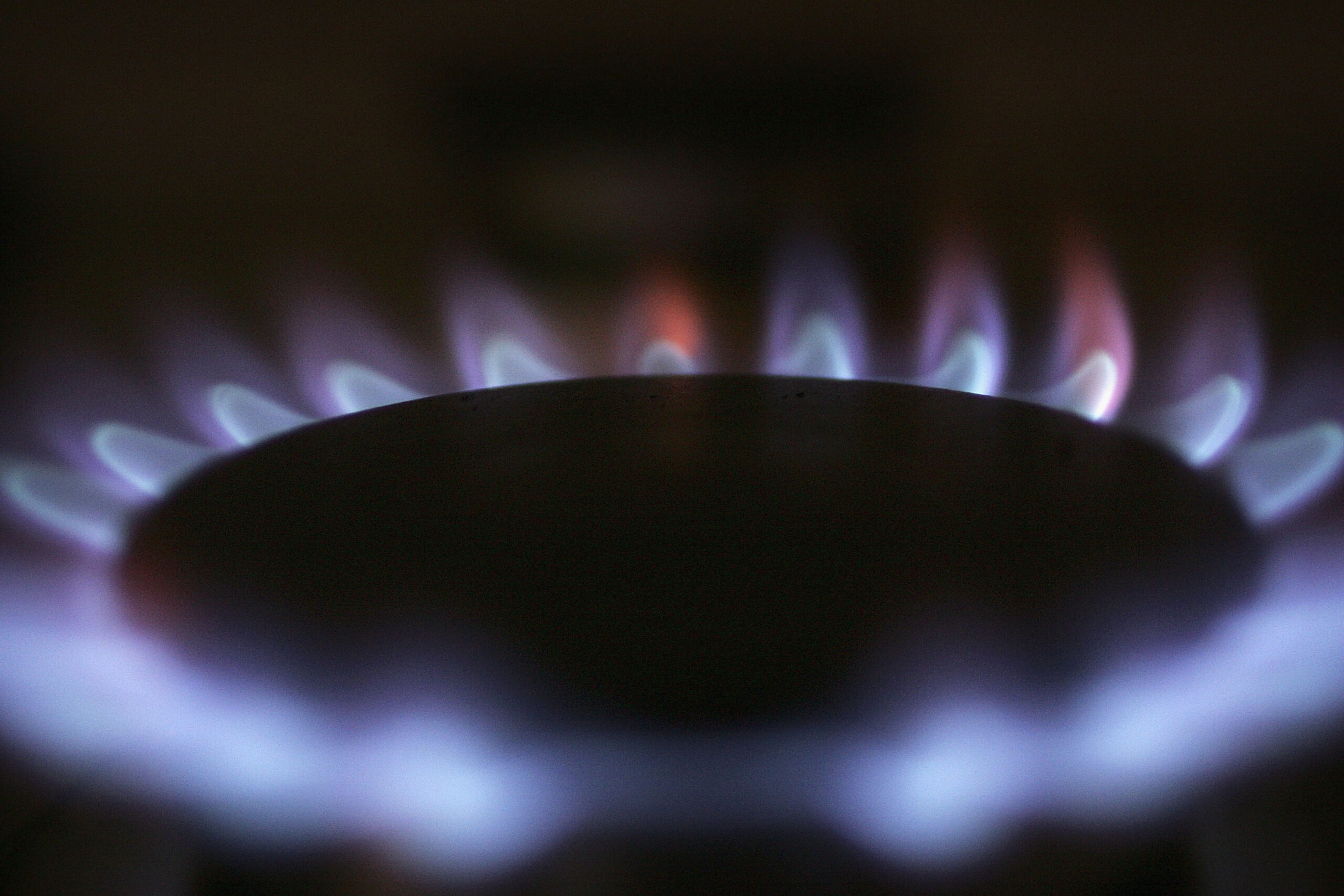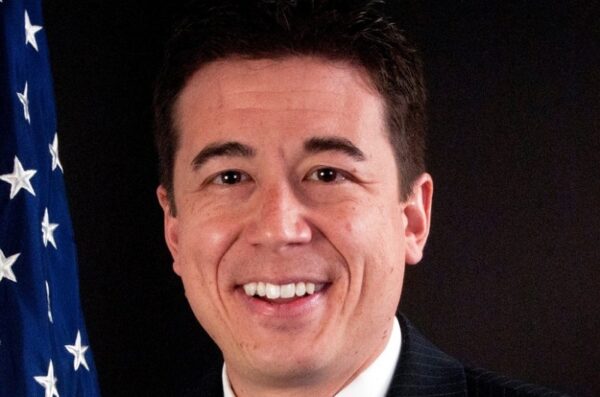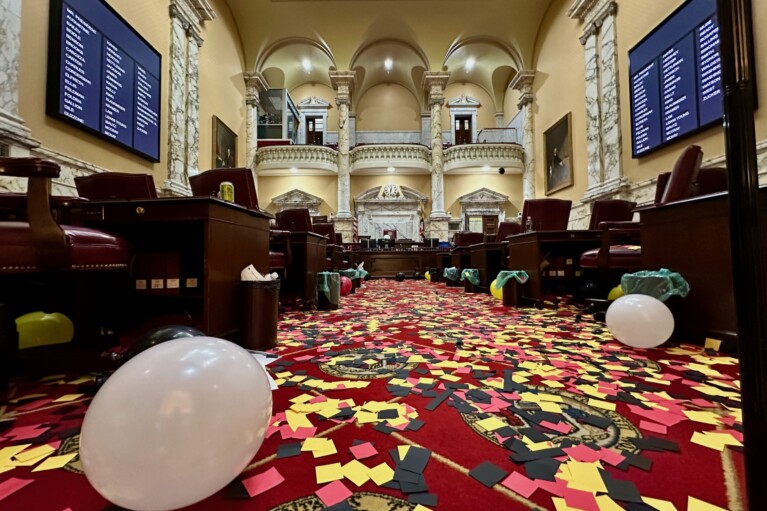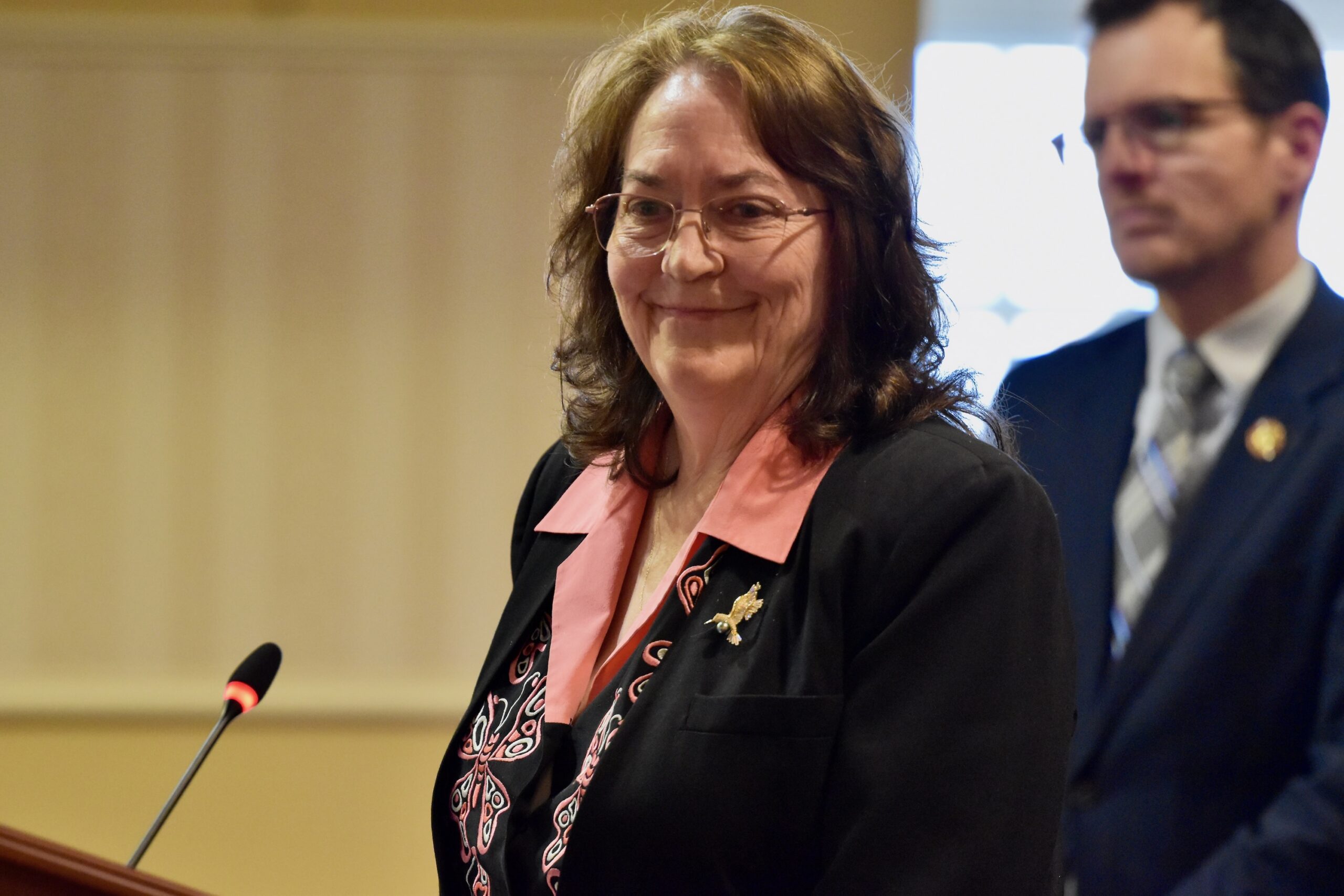Losing STRIDE? Benefits of Natural Gas Program Questioned as Gaze Turns to Electrification

Nine years ago, the General Assembly passed a law governing the natural gas industry in the state that was designed, among other things, to reduce greenhouse gas emissions.
But the debate over combating climate change has evolved rapidly in the intervening years, and some lawmakers and environmentalists saw the very same law as an impediment as they were crafting aggressive climate change legislation during the recent legislative session. Supporters of the natural gas industry countered that the climate bill could amount to the state reneging on a promise to the gas utilities and their customers.
Ultimately, the 9-year-old law, known as the Strategic Infrastructure Development and Enhancement (STRIDE) program for the natural gas sector, was left intact. But it was name-checked often during the intense debate over the Climate Solutions Now Act of 2022, which will become law without the governor’s signature.
STRIDE’s role in the recent legislative debate speaks volumes about the political muscle of the utility industry in the state, the evolution of the climate policy debate, and the relative merits of natural gas as a clean fuel. Some lawmakers and environmentalists suggest that the program’s mere existence could slow the state’s attempts to accelerate building electrification — a way of heating and cooling homes, offices, retail outlets and industrial buildings with electric power that produces far fewer carbon emissions than natural gas.
The STRIDE program also brought criticism this year from a leading consumer advocate, who warned that over the next several years, the poorest utility customers in the state could wind up disproportionately footing the bill.
“The gas companies did everything they could to cripple the Climate Solutions bill, and they succeeded to a degree,” said House Environment and Transportation Chair Kumar P. Barve (D-Montgomery), one of the architects of the legislation. “But regardless, we’re going to take a look at what the logical phase-down of natural gas infrastructure is, and we’re going to send a signal to the marketplace that the future is electric.”
The STRIDE law was enacted nine years ago to expedite natural gas infrastructure maintenance and repair work around the state. There are thousands of miles of underground natural gas pipelines in the state, some dating back to the 19th century. Most are made of cast iron or bare steel. That’s particularly true in Baltimore City, where the underground infrastructure is some of the oldest in the U.S.
“Many of our natural gas distribution systems are aging,” said Jason M. Stanek, chair of the Maryland Public Service Commission, which regulates most utilities in the state.
Underground leaks in old pipes are often difficult to detect. They can have disastrous environmental consequences and present myriad other public safety hazards. Iron and steel pipes, while undeniably durable, can develop leaks in their joints and crack when they freeze. Newer pipes made of plastics or other synthetic materials have a lifespan of about 50 years and are generally easier to fix if something goes wrong.
The idea behind the 2013 bill, which was championed by senior members of the Senate Finance Committee and the House Economic Matters Committee, the legislature’s principal energy policy panels, and signed into law by then-Gov. Martin J. O’Malley (D), was to give the state’s natural gas utilities an incentive to repair and improve their infrastructure over a 30-year period — which in turn would reduce greenhouse gas emissions. They’d be allowed to charge ratepayers a monthly surcharge on their utility bills to help defray the cost of an ambitious work schedule, and in turn the companies would be required to submit five-year plans outlining their intended maintenance projections to the Public Service Commission.
Many gas and electric utilities submit annual rate increase requests to the commission, based on a variety of factors (which have evolved over the years). But STRIDE enabled the gas companies to enjoy a degree of revenue certainty for their infrastructure projects, as long as they satisfied the commission that they were completing the work on the agreed-upon schedule.
By many accounts, STRIDE has accomplished its basic goals. Baltimore Gas & Electric, one of four natural gas utilities participating in the program, says it has repaired or replaced 300 miles of pipe since the law went into effect in 2014. The company has also replaced about 70,000 metallic service lines going directly into homes or commercial properties.
“It’s been a very successful program,” said Mark Case, vice president of regulatory policy and strategy at BG&E.
The other utilities in the program are WGL Energy, also known as Washington Gas; Columbia Gas, in Western Maryland; and Elkton Gas on the Upper Shore.
Case said STRIDE will enable BG&E to repair and replace about 1,000 miles of pipe over a 30-year period, when a more routine maintenance schedule probably would have taken at least 80 years. He said the program has enabled the company to reduce methane gas emissions by about 4 million pounds and has eliminated 210,000 metric tons of greenhouse gas emissions.
“That’s the equivalent of taking 45,000 cars off the road in Maryland,” he said.
Case also cast the program as an economic development driver, noting that it’s enabled the company to hire 600 more workers and use additional contractors, and that the benefits of improved infrastructure radiate out to the broader economy.
Stanek said STRIDE is providing for “necessary investments” in natural gas infrastructure.

Maryland Public Service Commission Chair Jason M. Stanek.
“We’ve seen that hundreds of miles of main have been replaced that are attributable to STRIDE,” he said. Because utility companies under the program outline their repair plans in great detail, “at any given time, we know up front, down to the street level, what projects they’re working on.”
And while the utilities submit five-year maintenance plans to the Public Service Commission, the commission reviews them and the companies’ progress on an annual basis. Stanek called that check-in “an important consumer protection” that ensures the utilities “don’t go too far astray.”
Under STRIDE, the four gas utilities are allowed to charge residential ratepayers up to $2 a month to pay for the infrastructure work; surcharges for commercial and industrial customers vary. The Public Service Commission reconsiders the surcharge rate every five years.
The fixed surcharge, Case said, “allows for a little bit more contemporaneous cost recovery,” which gives the gas companies a guaranteed revenue stream to finance the work.
But some consumer advocacy groups are less than enamored with the scheme.
“What industry gets their money first and then produces the receipts?” asked Tammy Bresnahan, director of advocacy for AARP’s Maryland chapter.
Utilities ‘still a force’ in Annapolis
Natural gas was once seen as a “bridge fuel” that was cleaner — and often cheaper — to produce, generate and distribute than other fossil fuels like oil and coal. The boom of natural gas production over the past two decades in the U.S. has been principally responsible for the decline of the coal industry — though many coal backers also blame strict environmental regulations — and has also eased U.S. dependence on foreign oil.
And yet, environmental groups over the past several years have targeted the production and distribution of natural gas for its environmental hazards — especially when the process known as fracking is used to extract the gases from rock formations deep under the ground. They’ve also sounded warnings about the potential devastation from pipeline leaks.
In 2017, Gov. Lawrence J. Hogan Jr. (R) surprised lawmakers, business leaders and environmental groups alike by agreeing to support a bill that banned fracking in the state, reversing what he’d said on the campaign trail in 2014. But anyone who thought the fracking ban would immediately reduce the amount of natural gas being shipped underground in Maryland was sorely mistaken. In the years since, state officials have considered, debated and approved pipeline projects that extend the fuel’s reach into new parts of the state.
More recently, environmentalists have targeted the concept of building electrification as a key weapon in the fight against global warming. Last fall, the Maryland Climate Commission, co-chaired by Ben Grumbles, Hogan’s secretary of the environment, approved a plan that encouraged electrification, teeing up the debate over the climate bill in this year’s legislative session.
The bill sponsors initially hoped to include a provision that would have set a timeline for phasing out the use of natural gas in new building construction and for guiding the transition to electrification in existing structures. But as the debate over the Climate Solutions Now Act unfolded, it quickly became apparent that the gas utilities were putting up major objections to the proposed pace of building electrification in the legislation. They questioned whether the state’s electric grid could handle such a transition so quickly, and joined with building interests, executives of oil and gas heating companies and restaurant groups to say the legislation could jeopardize their livelihoods and make the state’s energy markets less reliable.
Gas and electric utilities have a Murderer’s Row of hired guns — some of the best, most plugged-in and highly compensated lobbyists in Annapolis. BG&E uses four of the top firms in town and also has a seasoned stable of in-house lobbyists. Washington Gas uses three top firms and a major industry consultant, and WGL Energy uses its own lobbying firm.
“Their arguments are nonsensical, but they’re still a force,” said Senate Education, Health and Environmental Affairs Chair Paul G. Pinsky (D-Prince George’s), the chief sponsor of the climate bill.
Frequently, the gas companies invoked the STRIDE program in their arguments. How could they meet their commitments to the state to improve natural gas infrastructure, they said, if the state was planning to phase out natural gas so quickly? And wouldn’t the state be breaking its commitment to the gas companies — and by extension, their customers — if STRIDE was effectively overridden?
One lawmaker who was supportive of the gas utilities’ arguments said it was like the state had given the utilities an engagement ring and then jilted them at the altar.
While debate on the climate legislation took place over several weeks in House and Senate committees, Sen. Antonio L. Hayes (D-Baltimore City) and Del. Talmadge Branch (D-Baltimore City) introduced legislation that would have allowed the companies to seek annual changes to the STRIDE surcharges by figuring them into their yearly requests for rate increases, instead of seeing them reconsidered every five years.
Utilities have recently said their ability to complete their infrastructure work has been impacted to a degree by supply chain issues, labor shortages and increased costs. Hayes told his colleagues on the Senate Finance Committee that a gas utility might slow down its repair regimen if it ran the risk of running up costs that would not be covered by the monthly surcharge.
“Under STRIDE, Maryland’s gas companies have replaced hundreds of miles of outdated pipes and reduced the time to complete this critical work by decades — but this work can still be completed faster,” he said in written testimony.
But consumer groups lined up to oppose the legislation, arguing that it would increase ratepayers’ utility bills at a time when natural gas prices are already increasing. The Public Service Commission, which did not take a formal position on the bill, extolled the transparency involved in STRIDE’s current regulatory scheme, and suggested that a change could interfere with that aspect of the law.
The bills languished in their committees and never came up for a vote.
“We’re thrilled that the General Assembly saw the way and didn’t add another surcharge on people’s utility bills,” said Bresnahan, the AARP lobbyist. “We believe that this was a good thing, especially for older, retired people living on fixed incomes.”
‘Most ambitious’ climate goals in the country
Meanwhile, the major climate legislation, which seeks to reduce the state’s greenhouse gas emissions by 60% by 2031 and achieve net-zero emissions by 2045, was enacted with a provision that the state complete a study by 2023 on how much strain electrification would place on the state’s electric grid, rather than setting a timetable for conversion.
Case, the BG&E executive, called the state’s emissions reduction goals “the most ambitious in the country,” and said the utility is committed to working with officials to meet them. But he also expressed satisfaction that natural gas will be part of the state’s fuels mix for the foreseeable future, even if it might eventually be phased out.
“This isn’t like 10 years and then we’re all electrified,” he said. “We’re going to continue to need a hybrid approach. It’s going to provide more [service] predictability for consumers and other stakeholders…And it’s a much more cost-effective way to do things.”
Pinsky is still burned by the utilities’ stance on the climate legislation, and the fact that they invoked STRIDE in their attempts to weaken it and delay electrification. He contrasted their position to support for the measure from big companies like IKEA and Nestle.
The utilities, he said, “are going to fight to the very end to squeeze out as much profit as they can until the industry sunsets. It’s so disappointing. Even more enlightened capitalists understand the big picture.”
Now a major consumer watchdog is sounding another alarm about STRIDE: Who’s going to pay for it in the years ahead?
David S. Lapp, head of the Office of People’s Counsel, a state agency that defends consumer interests in utility cases before the Public Service Commission and other regulatory bodies, has warned that while the STRIDE program is set to end in the 2040s, consumers could be paying for the infrastructure improvements until the year 2100, due to various “recovery costs” the utilities may seek. What’s more, he predicts, it’s more affluent homeowners and commercial property owners who will lead the charge toward electrification before there are specific state mandates — forcing poorer residents who continue to pay for gas service to foot the bill for STRIDE.
“If customers are leaving the gas system, these costs are borne by fewer and fewer people,” Lapp said at a clean energy conference in Annapolis earlier this year. “The people that can afford to electrify are the ones who will move off first. The people who can’t afford to electrify are going to be stuck with increasing costs.”
Even Stanek, who at the Public Service Commission does not develop policy but implements regulations on energy and climate set by the legislature, said the potential cost burden of STRIDE in the coming years should get the attention of state policymakers.
“That’s something that folks in Annapolis ought to figure out,” he said.




 Creative Commons Attribution
Creative Commons Attribution